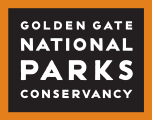How Parks Help Build Healthy, California Communities
Publication Date
Story/Content
On January 10, I participated on a panel titled “Maximize Community Active Living Opportunities Through Partnerships with Parks” at the California Supplemental Nutrition Assistance Program Education (SNAP-Ed) Local Implementing Agency Forum in Sacramento, California. This panel featured the Parks After Dark (PAD) program from the County of Los Angeles Department of Parks and Recreation, Marin County’s Parks Prescription programs, and the Institute at the Golden Gate's work as a technical assistance provider for issues at the intersection of health and parks.
County of Los Angeles Parks After Dark
Los Angeles’s PAD program transforms parks into community hubs through extended summertime park operation hours, bringing together a variety of programs and services that help build strong families and communities. Agencies involved in this program include the Los Angeles Board of Supervisors, Chief Executive Office, Department of Public Health, Probation, Sheriff’s Office, Public Defender’s Office, Department of Human Resources, Department of Mental Health, the Public Library, the Department of Public Social Services, and a variety of community-based organizations all working across sectors to build community cohesion through parks. At a PAD program, you may see law enforcement officers playing basketball with local youth, walking clubs, team sports, at-risk youth hired to assist with park programming, talent shows, movie nights, cooking demos, career fairs, resource fairs, or a neighborhood potluck!
Marin County Park Prescription Programs
Marin County is an innovative leader in Park Prescription programming through their Marin City and San Rafael-Canal pilot programs. Working closely with federally qualified health clinics, social services, local park agencies, public health educators, and community-based organizations, these Park Prescription programs create a referral process that supports patients in making healthy lifestyle changes that lead to improved health biometrics and other markers of success. Some of Marin County’s keys to success include building on existing momentum within the community, building partnerships to leverage resources, and engaging community members throughout the process.
Institute at the Golden Gate Technical Assistance - Connecting Parks and Public Health
If you’re a public health or social service organization interested in learning about how you can connect with parks, check out this handout for ideas on how to help your communities get healthy outdoors. It’s organized into four sections: Promotion, Program, Policy-Systems-Environmental Change, and Technical Assistance & Training. Even though this piece was created for SNAP-Ed program planners, I hope you will find this list useful for finding the wide range of ways to connect parks and public health.

